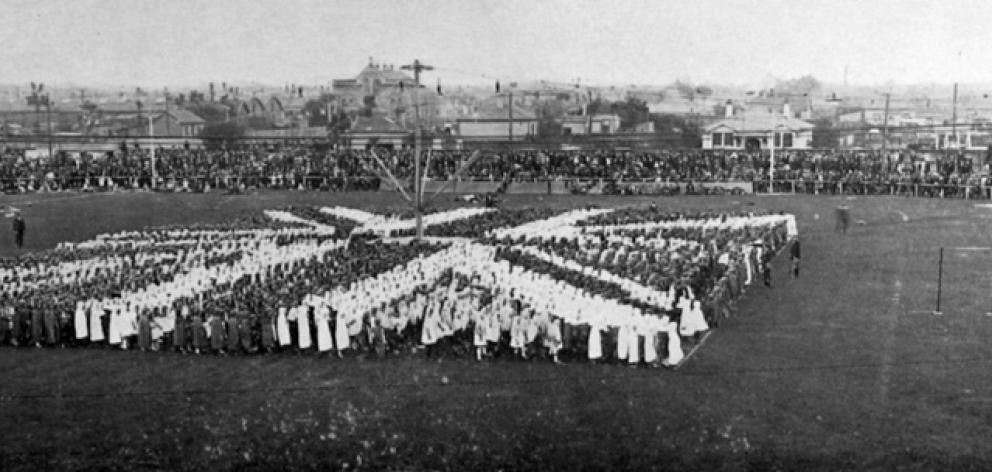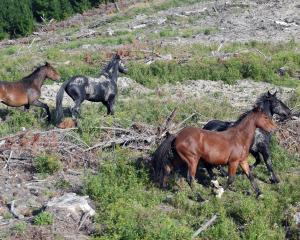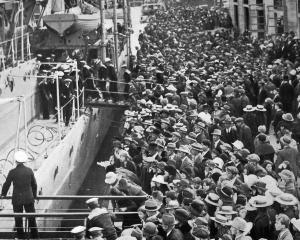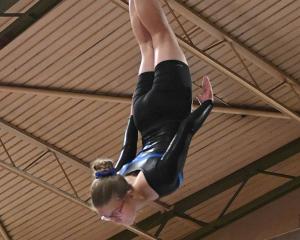
School children form a living flag of the Empire during a military pageant at Carisbrook, Dunedin on April 12, 1924 to raise funds for a new Dunedin war memorial. — Otago Witness, 22.4.1924
up their positions on the chalk marked area to form the Living Flag of Empire. The National Anthem was played, and the crowd showed their appreciation of the fine effect achieved by prolonged cheering. The children went through a number of turning movements to the command of Physical Instructor Cree, and then everyone joined in singing ‘‘God Defend New Zealand.” Despite the pooh-poohings of some people, human nature cannot be stifled — there is still such a thing as pride of race — and everyone who loves his country glowed at the fine sentiment conveyed in the Living Flag. A dramatic touch was given when 500 pigeons were released from the centre of the Living Flag. Most of the children then marched out, and the remainder — all in red — formed St George’s Cross. The greatest cheering of the day came from the school children following in the next item. This was what was described as a daylight fireworks display. A bomb was fired in the air and exploded, and out of it came a large, gaudy, fearsome-looking animal. It filled with air and floated high across the ground to shrieks of delight and the cheering of the boys and girls.The grand historical pageant entitled ‘‘The Army and Navy Through the Ages’’ came next. The procession entered from the pavilion, and marched round the ground As the heroes and heroines of the past played their little parts on the grass stage at Carisbrook one could not help one’s thoughts from flying back over the ages. While the procession was moving slowly round the ground to the music of several bands present, pupils of the YMCA under Mr J.V. Hanna gave a gymnastic display. The procession and this display concluded, 96 pupils of the Girls’ High School, under Mr J.P. Northey, marched on to the ground and gave some attractive dumbbell work. The Mayor said it afforded him very great pleasure to be present that afternoon to take part in the official opening of the military pageant. The pageant was, he said, a unique event in the history of the city of Dunedin as it was in the history of the province of Otago. They would be given, an opportunity of seeing what war was like in these modern days. Apart from the spectacular nature of the display those responsible for its production had not forgotten that there was an educative value attaching to it, and they did not require to be told — not even the children — that this great Empire of ours had been built up by the achievements of the navy and army. — ODT, 14.4.1924
Compiled by Peter Dowden











